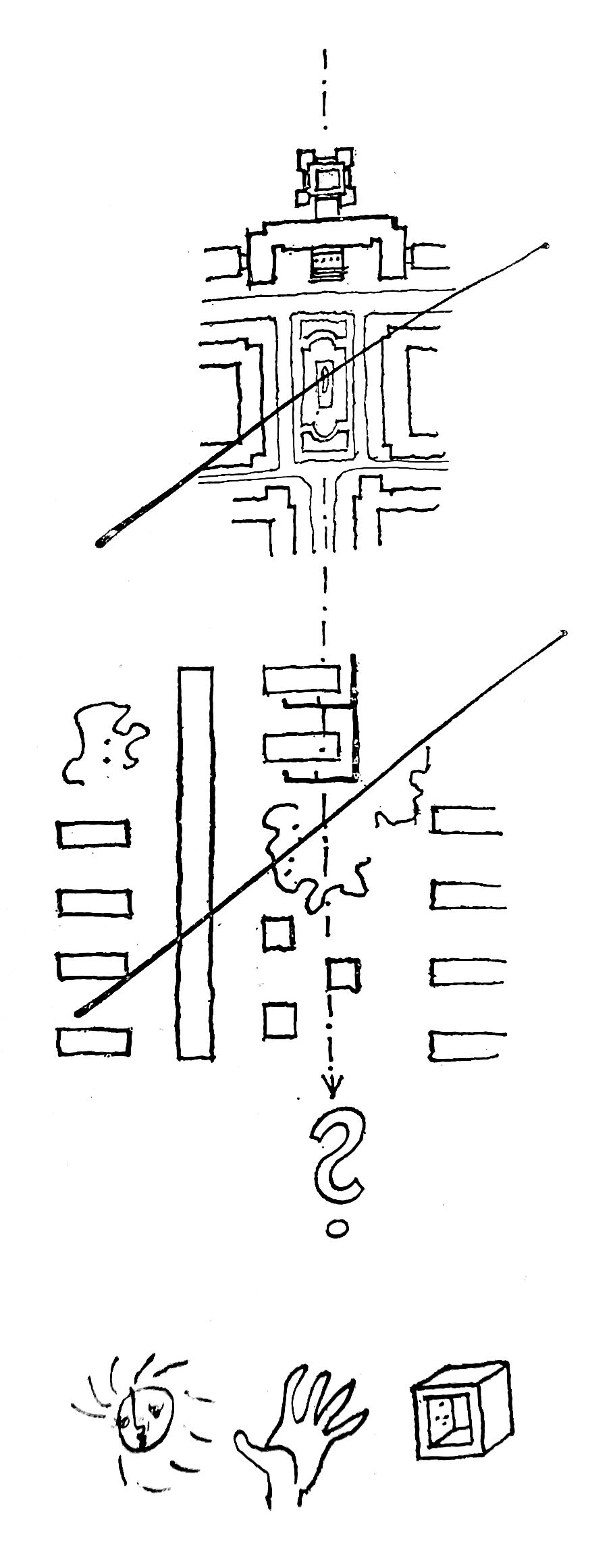Maroš Krivý, “Humanizing the Living Environment and the Late Socialist Theory of Architecture,” in Vladimir Kulić (Ed.), Second World Postmodernisms: Architecture and Society under Late Socialism, pp. 33–46 (London: Bloomsbury, 2019).
︎ PDF ︎
In a diagram sketched in 1965, Slovak architect Iľja Skoček outlined the post-war history of housing design in socialist Czechoslovakia as a dialectical succession of three moments. The 1950s were depicted by a monumentally ornate, yet compact housing estate, while the 1960s were characterized by an open-plan cluster of slabs and towers. These two sketches, representing, respectively, the socialist realist and functionalist variants of urbanism, were crossed out. The third moment was illustrated with a question mark and three symbols: a sun, a hand, and a cuboid. The challenge for socialist housing, intimated in this diagram, was to overcome the shortcomings of the first two moments by synthesizing their respective merits: the humanistic design of socialist realism and the scientific-technological rationality of functionalism. ...
︎ PDF ︎
In a diagram sketched in 1965, Slovak architect Iľja Skoček outlined the post-war history of housing design in socialist Czechoslovakia as a dialectical succession of three moments. The 1950s were depicted by a monumentally ornate, yet compact housing estate, while the 1960s were characterized by an open-plan cluster of slabs and towers. These two sketches, representing, respectively, the socialist realist and functionalist variants of urbanism, were crossed out. The third moment was illustrated with a question mark and three symbols: a sun, a hand, and a cuboid. The challenge for socialist housing, intimated in this diagram, was to overcome the shortcomings of the first two moments by synthesizing their respective merits: the humanistic design of socialist realism and the scientific-technological rationality of functionalism. ...
